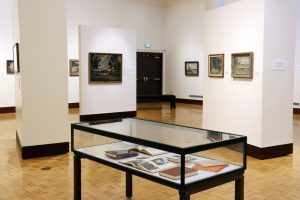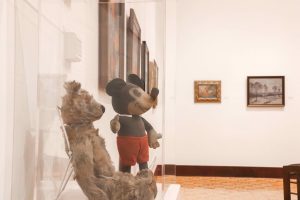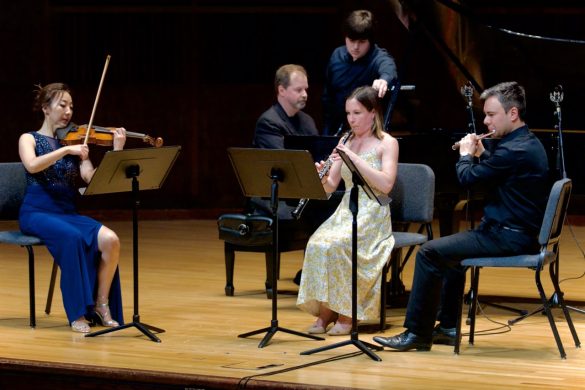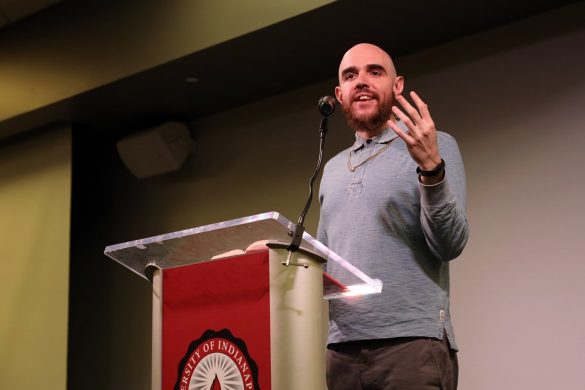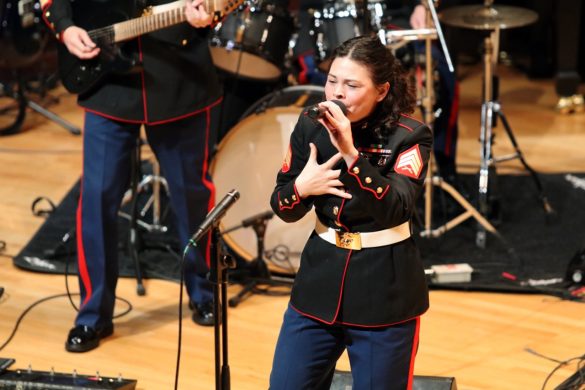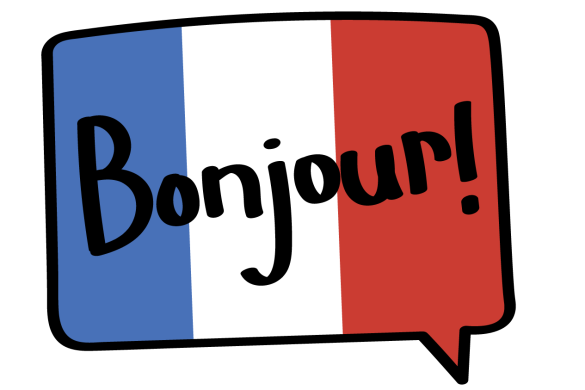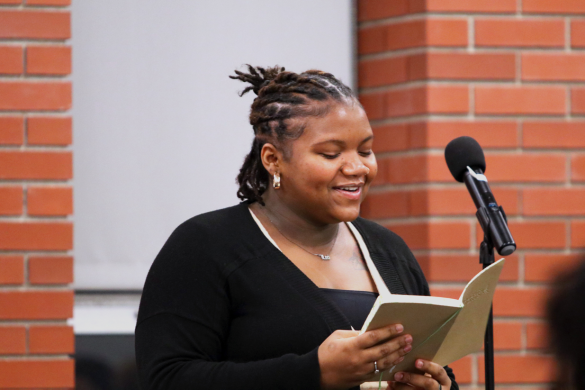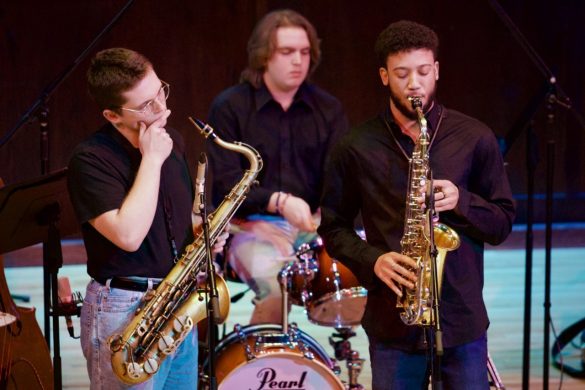“The Wilbur D. Peat: Indianapolis Icon” exhibit displayed the hidden and rare works from the artistic side of Indianapolis art administrator Wilbur Peat. The exhibition ran from Sept. 10 to Oct. 5 in Christel DeHaan Fine Arts Center gallery and commemorated Peat’s work and contributions to the Indianapolis art scene.
A table full of sketches and books authored by Peat could be found in the gallery. Prior to this much of his work had never been seen by the public. The works of art were allowed to be displayed thanks to his family.
All of the works were collected by Peat’s family, who loaned it to the University of Indianapolis Department of Art & Design. Most of the works were only known to few, Exhibition Organizer and Assistant Professor of Art & Design Katherine Fries explained, making them a rare glimpse into his life as an artist.
Descriptions of the pieces told the story of Peat’s life. He was an American citizen born in China, later studied art at the Cleveland School of Art and eventually took a position as director of the Akron Art Institute. He then became director of the John Herron Art Museum, which is now under the name of Newfields, from 1929 to 1965.
Fries did not come across the idea because of Peat’s portfolio, but because of the legacy he left his family.
“[Wilbur Peat] is a prolific artist and he’s got really nice work,” Fries said. “But it came to be because we [department members] know his son, David Peat. David is a long time letterpress printer and collector and he’s been very supportive of our emerging print program.”
While Fries was visiting David with a group of faculty members and students, she made a remark that one of the paintings in his living room was “phenomenal.” According to Fries, David informed her that it was one of his father’s works and this lead Fries to learn more about the icon.
“The more that I talked to David and the more that I researched Wilbur, the more obvious it was that Wilbur had made pretty amazing lasting contributions to the Indianapolis art scene,” Fries said. “But his own work as an artist was fairly unknown except to family, friends and colleagues.”
Every piece featured in the exhibit is taken from Peat’s time as a child in China until his death in the 1960s.
Peat’s pieces were often biographical, including a painting of his son David’s favorite childhood toys, which were displayed in a case beneath the painting. David said the artwork made him feel closer to his late father.
One of Peat’s paintings even featured David’s favorite toys as the main piece. Beneath the frame of the painting was a glass case containing the actual toys portrayed in the painting. Fries said that the “biographical” display was intentional.
“We have some of his earliest pieces since he was adolescent from 1910 in China all the way until the very last painting he completed as an artist before his passing,” Fries said. “He passed away in 1966 but never had the opportunity for the retrospective deserving of his work. It was also to reflect on the contributions he made to Indianapolis.”
Junior art major Amanda Thompson helped set up the exhibit as a requirement for a class. She also had to be present for the reception on Sept. 24. Thompson said she enjoyed the biographical display of the works. However, she learned more about Peat from listening to David speak about him during the opening of the exhibit than setting the exhibit for display.
“I liked the landscapes and I liked how it was a collection of his whole life from different points in his life, such as vacations,” Thompson said. “I had met David before the exhibit but I didn’t know about his dad being an artist until I had to set up the exhibit. It was weird because I had known David since I joined the letterpress program but I never thought [of] his dad’s legacy.”
Fries said the exhibit was an opportunity to show students that success does not have to be measured in recognition. Only close family members had seen his most of Peat’s works prior to the exhibition, and now he has been celebrated as an “icon” in the Indianapolis art community.
The next exhibition will be “Selected Work from the UIndy Permanent Art Collection,” which will be open from Oct. 17 to Nov. 9. The exhibit will feature two and three dimensional works from local, regional, national and internationally known artists that UIndy has collected from students and the public for the past 60 years.
